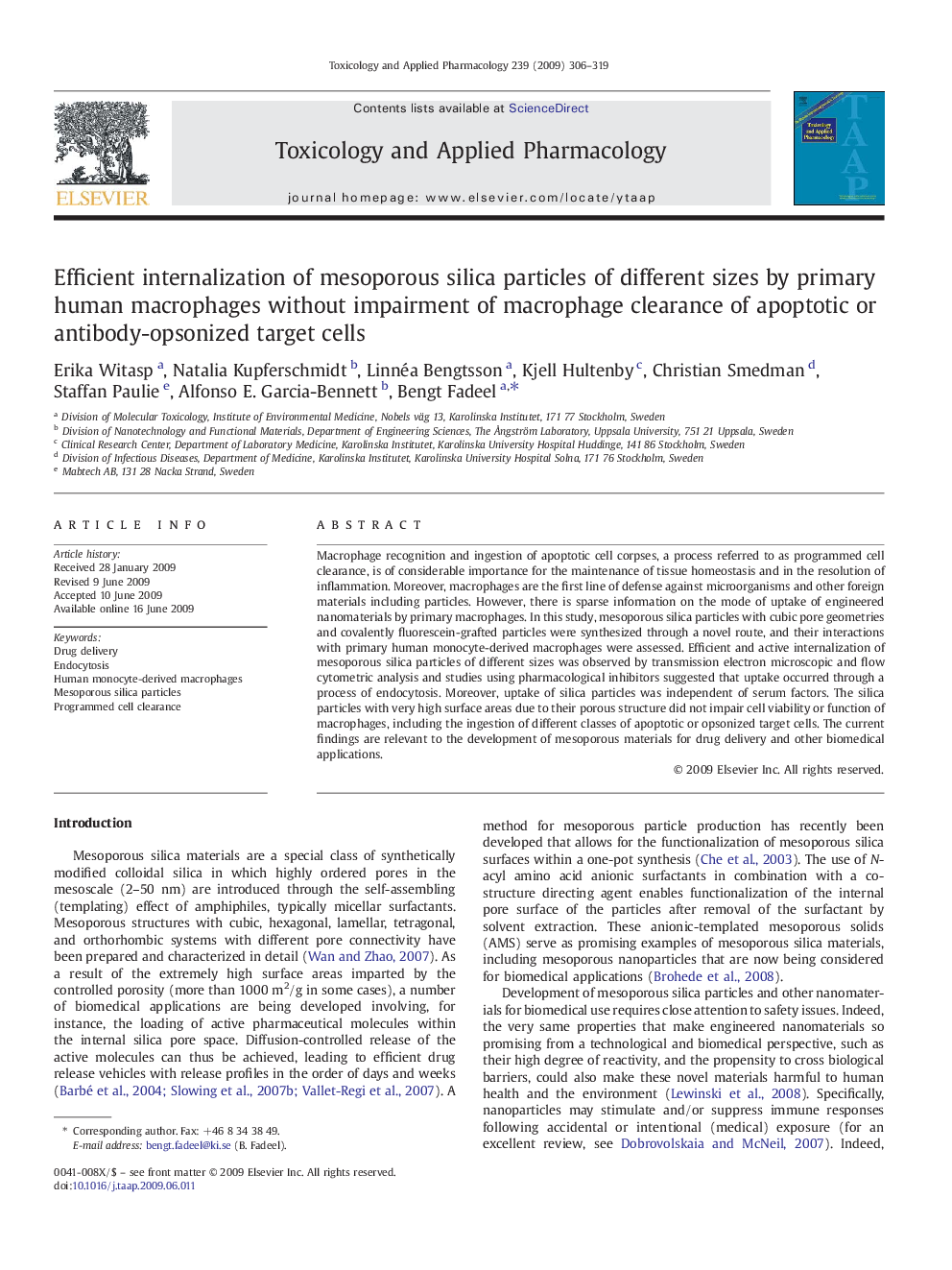| Article ID | Journal | Published Year | Pages | File Type |
|---|---|---|---|---|
| 2570522 | Toxicology and Applied Pharmacology | 2009 | 14 Pages |
Macrophage recognition and ingestion of apoptotic cell corpses, a process referred to as programmed cell clearance, is of considerable importance for the maintenance of tissue homeostasis and in the resolution of inflammation. Moreover, macrophages are the first line of defense against microorganisms and other foreign materials including particles. However, there is sparse information on the mode of uptake of engineered nanomaterials by primary macrophages. In this study, mesoporous silica particles with cubic pore geometries and covalently fluorescein-grafted particles were synthesized through a novel route, and their interactions with primary human monocyte-derived macrophages were assessed. Efficient and active internalization of mesoporous silica particles of different sizes was observed by transmission electron microscopic and flow cytometric analysis and studies using pharmacological inhibitors suggested that uptake occurred through a process of endocytosis. Moreover, uptake of silica particles was independent of serum factors. The silica particles with very high surface areas due to their porous structure did not impair cell viability or function of macrophages, including the ingestion of different classes of apoptotic or opsonized target cells. The current findings are relevant to the development of mesoporous materials for drug delivery and other biomedical applications.
